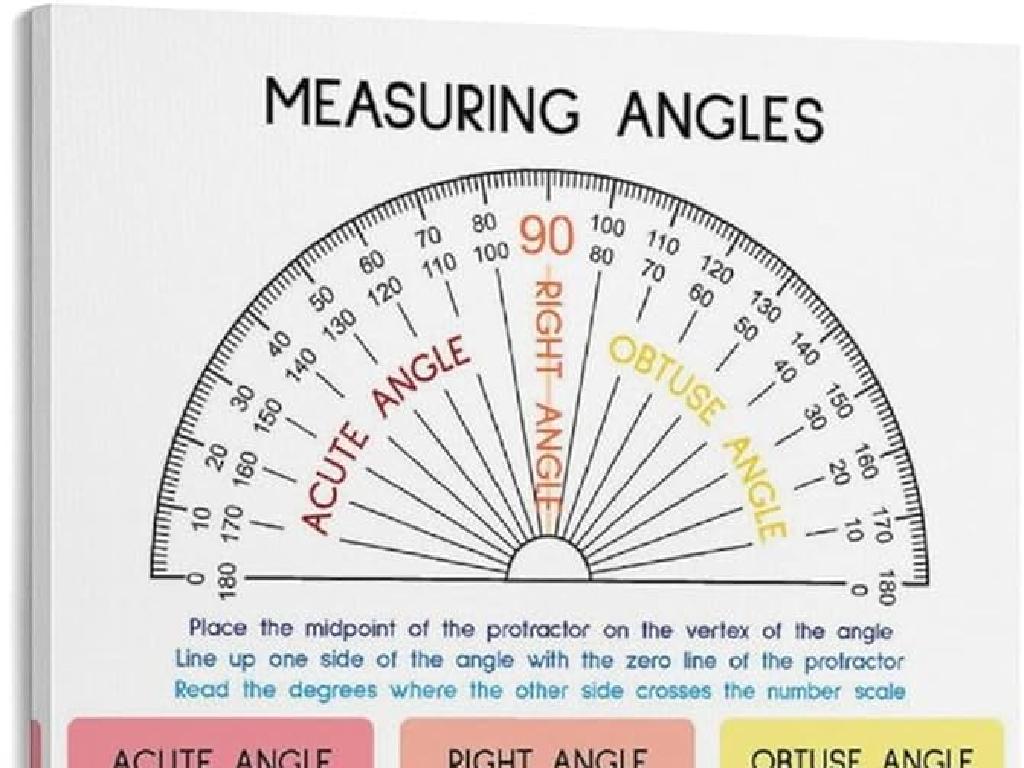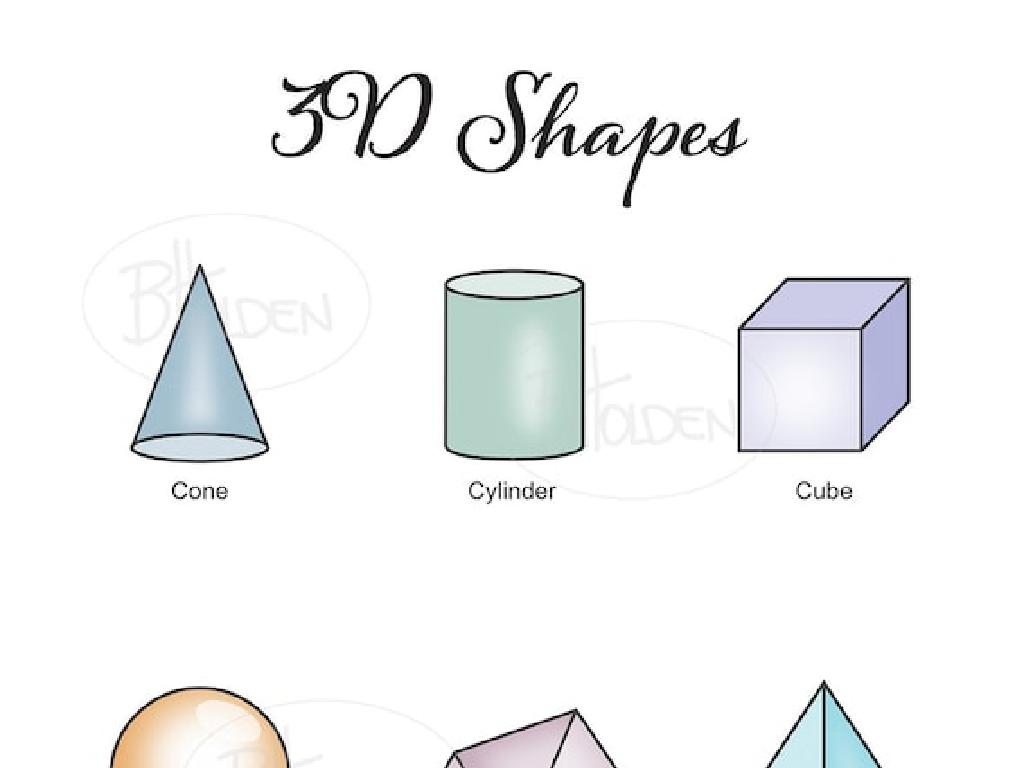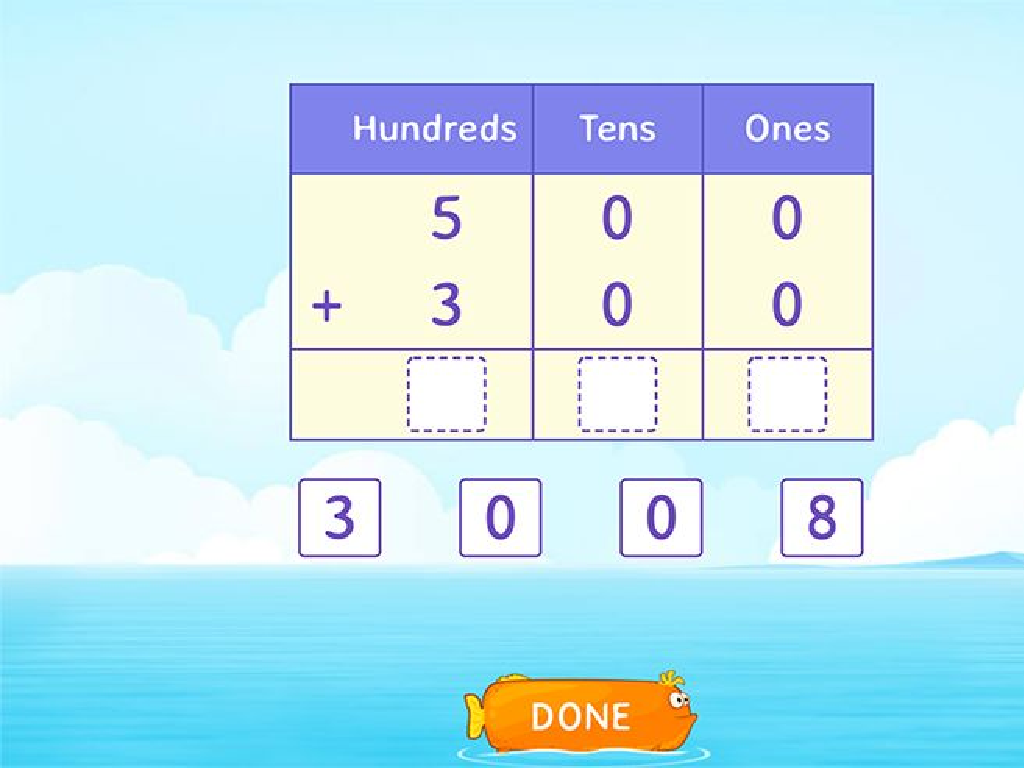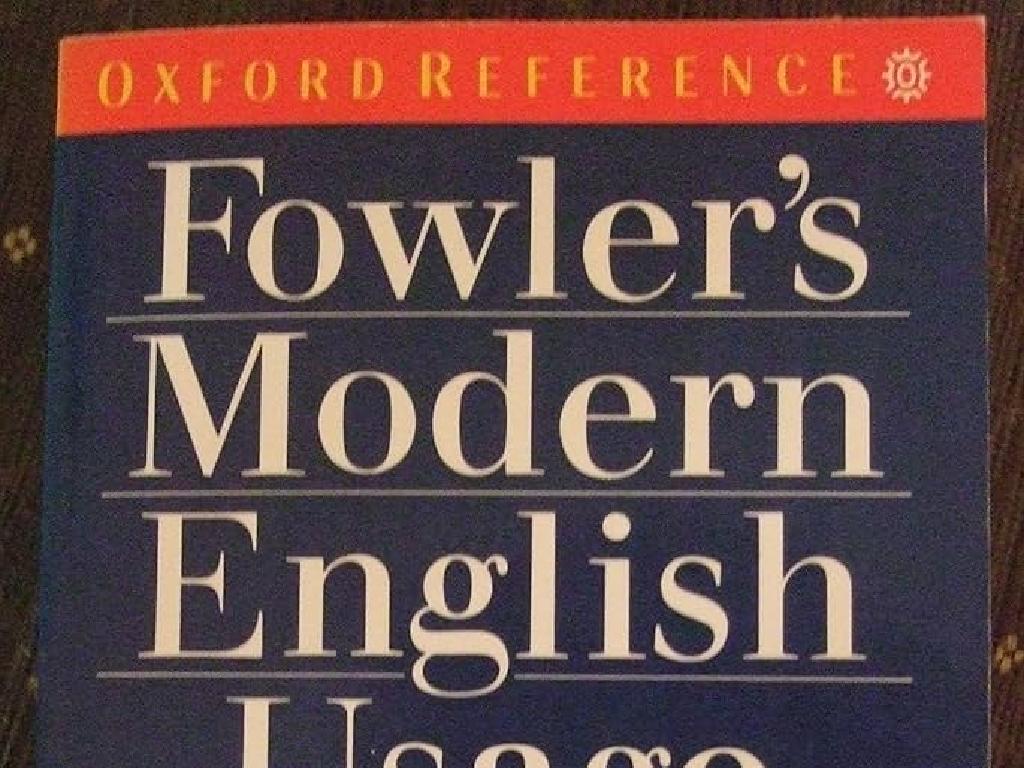Choose The Lowercase Letter That Matches: Review
Subject: Language arts
Grade: First grade
Topic: Lowercase And Uppercase Letters
Please LOG IN to download the presentation. Access is available to registered users only.
View More Content
Matching Uppercase and Lowercase Letters
– Play a fun matching game
– Learn big and small letter pairs
– Match ‘A’ with ‘a’, ‘B’ with ‘b’, etc.
– Understand the difference
– Big letters start sentences, small letters for the rest
– Improve reading and writing skills
|
This slide introduces a matching game to help first graders recognize and pair uppercase and lowercase letters. Emphasize the importance of knowing both forms of each letter for proper reading and writing. Uppercase letters typically begin sentences and proper nouns, while lowercase letters make up the majority of text. Activities can include matching letter cards, finding pairs in a workbook, or interactive whiteboard games. Encourage students to articulate the differences they notice and praise their progress in distinguishing between the two forms.
Meet the Alphabet!
– 26 letters in the alphabet
– Big and small letter versions
– Uppercase: A, B, C; Lowercase: a, b, c
– Sing the alphabet song
– Practice the song to learn all the letters
– Match uppercase to lowercase
– Find the small letter for A, B, C
|
This slide introduces the concept of the alphabet and the two versions of each letter to first graders. Emphasize that there are 26 unique letters, each with an uppercase (big) and a lowercase (small) version. Engage the class by singing the alphabet song together, which helps in memorizing the sequence of letters. After the song, conduct a matching activity where students identify the lowercase letter that corresponds to a given uppercase letter. This activity reinforces their understanding of the alphabet and the difference between uppercase and lowercase letters. Encourage participation and assist students who may struggle with the concept.
Matching Game: Big and Small Letters
– Look at the uppercase letters
– Find the matching lowercase letters
– Match them on the board together
– Example: Match ‘A’ with ‘a’
– ‘A’ is big and ‘a’ is small, they are a pair!
|
This slide introduces a matching game to help first graders recognize and pair uppercase and lowercase letters. Start by showing them a set of uppercase letters, then ask the students to find the corresponding lowercase letters. Use a board to visually match them together. For example, if you show a big ‘A’, the students should look for a small ‘a’. This activity will reinforce their understanding of the relationship between uppercase and lowercase letters. Encourage the students to say the letter sounds as they make each match to integrate phonics into the activity. Prepare a variety of letter pairs in advance to ensure each student has the opportunity to participate.
Practice Time: Matching Letters!
– Match uppercase to lowercase
– Draw lines to connect pairs
– Use a pencil to draw lines from A to a, B to b, C to c, etc.
– Check your matches carefully
– Share with a classmate
– After matching, show your worksheet to a friend and explain your matches
|
This slide is for a class activity where students will practice matching uppercase letters to their corresponding lowercase letters. Provide each student with a worksheet that has uppercase letters on one side and lowercase letters on the other. Instruct them to draw lines connecting each uppercase letter to its matching lowercase letter. Emphasize the importance of checking their work before sharing. Once they have completed the activity, they should pair up with a classmate to discuss their matches. This peer interaction reinforces learning and allows students to learn from each other. Possible variations of the activity could include using flashcards, playing a matching game, or creating a craft that involves connecting letters.
Let’s Review: Matching Letters
– Match uppercase to lowercase
– Connect ‘A’ to ‘a’, ‘B’ to ‘b’, etc.
– Sing the alphabet song
– Use the song to memorize letters
– Practice letter matching
– Use worksheets to match letters
– Keep practicing at home
|
This slide is a review for students to reinforce their understanding of the relationship between uppercase and lowercase letters. Emphasize the importance of being able to match big letters (uppercase) to their smaller counterparts (lowercase) as a foundational skill in reading and writing. Encourage the students to sing the alphabet song together to help with memorization of the letter sequence. Provide them with practice worksheets where they can draw lines to connect the uppercase letters to the corresponding lowercase letters. Remind them to continue practicing at home, perhaps with the help of their parents, to further solidify their skills. The goal is to make them comfortable and familiar with all the letters in both forms.
Class Activity: Letter Hunt Adventure
– Let’s hunt for letters in our room
– Find objects starting with your name’s letter
– What’s the big and small letter of your object?
– Share your findings with the class
|
This activity is designed to help students recognize and match uppercase and lowercase letters in a fun and interactive way. Before starting, review the concept of uppercase (big letters) and lowercase (small letters) with the class. Each student will then search for objects in the classroom that begin with the same letter as their name, identifying both the uppercase and lowercase versions of that letter. For example, if a student’s name is ‘Tom,’ they might find a ‘Table’ and identify the uppercase ‘T’ and lowercase ‘t’. After the hunt, have each student present their object and letters to the class. This reinforces letter recognition and helps with public speaking skills. Possible variations of the activity could include finding objects that end with the letter, finding multiple objects for one letter, or even a timed challenge.






